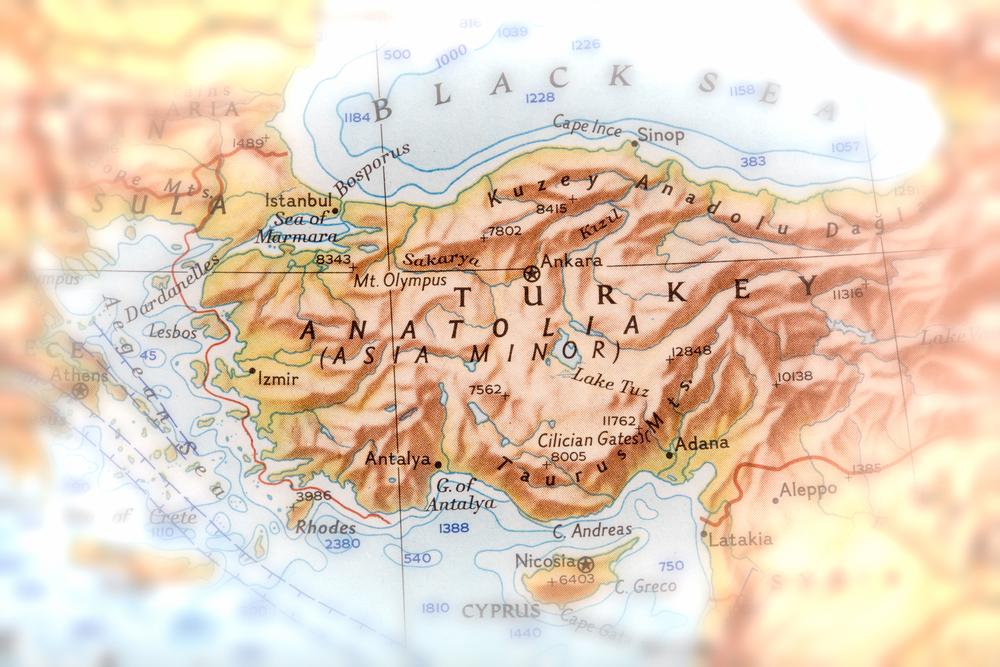Exploration & Production | Drilling / Well Results | Discoveries | Top Story | Exploration & Appraisals | Key Wells
Marsa Energy Discovers Gas in Turkey at Poyraz Field

Marsa Energy Inc. has announced a significant gas discovery at the Company-operated Poyraz West-1ST exploration well.
Log and test results indicate approximately 80 metres of net gas pay over a number of stacked reservoirs in a new gas play on the Company's Ortakoy Block. Two other recently drilled wells are to be tested before year-end.
The Poyraz trend was discovered in the second quarter of 2013 with the drilling of the Poyraz-1ST and Poyraz-2 wells. It is located in the AR/MRS/3913 block, in the Thrace Basin on the Gallipoli Peninsula in the northwest or European side of the Republic of Turkey.
Marsa is operator and holds 100 percent working interest in the Ortakoy Block through its wholly owned subsidiary Marsa Turkey BV.
Ortakoy Block Exploration Program
Marsa embarked on a three-well drilling program comprised of wells Poyraz N3-1, Poyraz West-1ST, and Poyraz S4-1 in the third quarter of 2014. All are located within a 15-square-kilometer 3D seismic program that was acquired by Marsa in mid-2013 following the Poyraz-1ST and Poyraz-2 discoveries. Each of the three new wells was designed to test independent structures characterized by direct hydrocarbon indicators. Initial plans were for rig-less completion and testing following drilling. Incremental gas zones, however, necessitated testing at Poyraz West-1 ST with the drilling rig.
Poyraz West-1 ST
Poyraz West-1 spud September 4, 2014 and was drilled directionally to a total measured depth (TMD) of 1,642.5 metres. It is located approximately 600 metres west of Poyraz-2 and the last 290 metres were sidetracked during reaming operations. Open hole and mud logs indicate multiple hydrocarbon-bearing zones within the Miocene and Eocene horizons.
Test 1 - In the first Poyraz West-1ST test, Marsa perforated a total of 21 metres at six shots per foot over seven discrete intervals from 1,548.5 to 1,590.0 metres in the Sogucak Formation, a fractured Eocene limestone. After a cleanup flow and shut-in period, this interval flowed natural gas for a 10-hour period on a 12/64 inch choke at between 1.5 and 1.7 million standard cubic feet (mmscf) per day with small amounts of 64.7º API condensate. Preliminary reservoir analysis indicates substantial flow restriction due to skin damage.
Of significant note is that there were hydrocarbon shows in the intra-Sogucak, equivalent to those tested in the upper portion of the Sogucak limestone, at the point Marsa elected to TD the well for operational reasons. The Company also notes that hydrocarbon shows, comparable to those seen in Poyraz West-1ST, were present in the upper Sogucak of the Poyraz-2 discovery well drilled in the third quarter of 2013. The Company was unable test the Sogucak in Poyraz-2 due to hole conditions during completion operations.
Test 2 - In the second Poyraz West-1ST test, Marsa perforated a total of 34.5 metres at six shots per foot over five discrete intervals from 1,482.5 to 1,533.5 metres in the Ceylan sandstones. The Company was unable to perforate what open hole and mud logs suggested was the best 8-metre interval as downhole equipment used to test the Sogucak carbonate covered this interval. After a cleanup flow and shut-in period, the second test interval flowed natural gas for a 24-hour period on a 16/64 inch choke at 0.5 mmscf per day. Flow and buildup test analysis is underway to determine potential flow restriction due to skin damage.
Test 3 - In the third Poyraz West-1ST test, Marsa perforated a total of 14.5 metres at six shots per foot over two discrete intervals from 1,407.5 to 1,440.0 metres in the Ceylan Formation. At these depths the original and sidetrack holes are less than 1 metre apart and the Company believes fluid invasion from the original hole had a material effect on test 3 flow performance. After recovery of all load fluid, the test 3 intervals were not capable of sustained flow.
Conclusion - Marsa considers tests one and two very significant as they confirm the potential of the Eocene play, which is the main play in most producing areas of the Thrace Basin, on the Ortakoy Block. Importantly, the Sogucak and Ceylan are both evident on the Company's 3D and 2D seismic coverage in a number of on-echelon trends, which will complement the Miocene play.
Poyraz N3-1
As previously reported, the Poyraz N3-1 exploration well, located approximately 1,500 metres north of Poyraz-2, spud August 15, 2014 and was drilled directionally to 1,000 metres TMD. The well was cased with a plugged back TMD of 467 metres and the rig was released August 28, 2014. Open hole and mud logs indicate a number of potential thin Kirazli sandstone gas zones that will need to be confirmed by production testing. Marsa intends to commence testing following testing at Poyraz S4-1.
Poyraz S4-1
Poyraz S4-1, located approximately 4,000 metres east of Poyraz-2, spud October 12, 2014 and was directionally drilled to 929.0 metres TMD. The well was cased with a plugged back TMD of 503.1 metres. Open hole and mud logs indicate a number of potential hydrocarbon-bearing zones within Miocene inter-bedded fractured limestone and marl units. The Company plans to commence completion and testing within the next two weeks.


